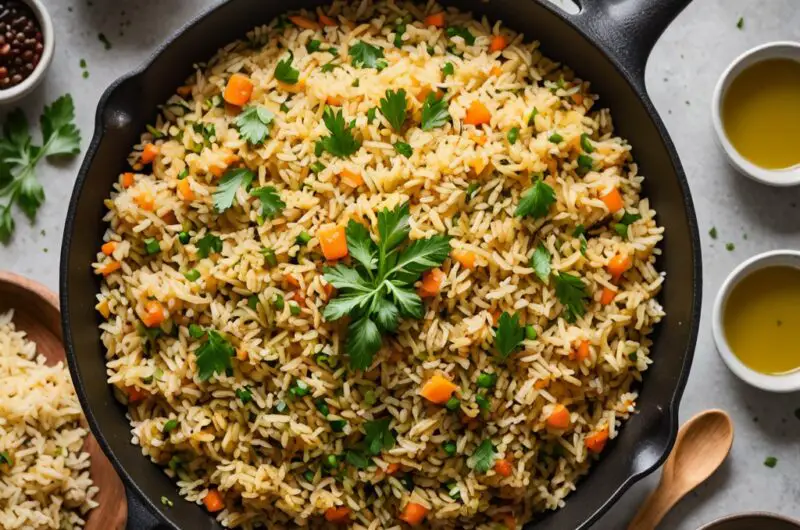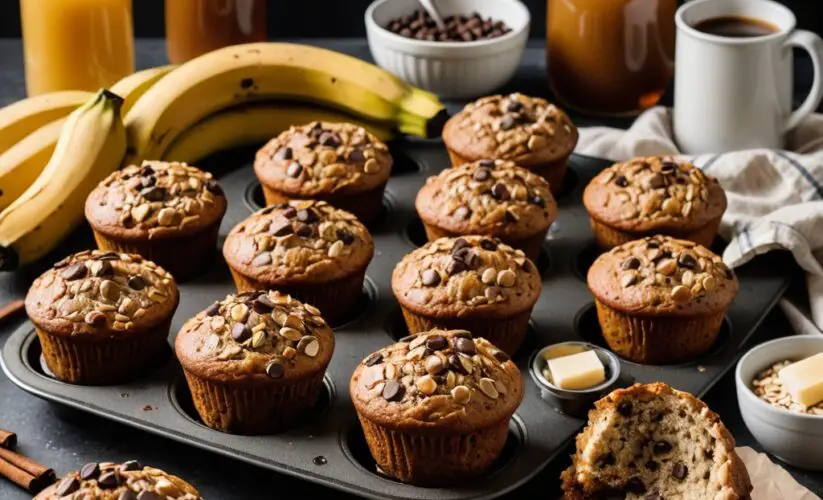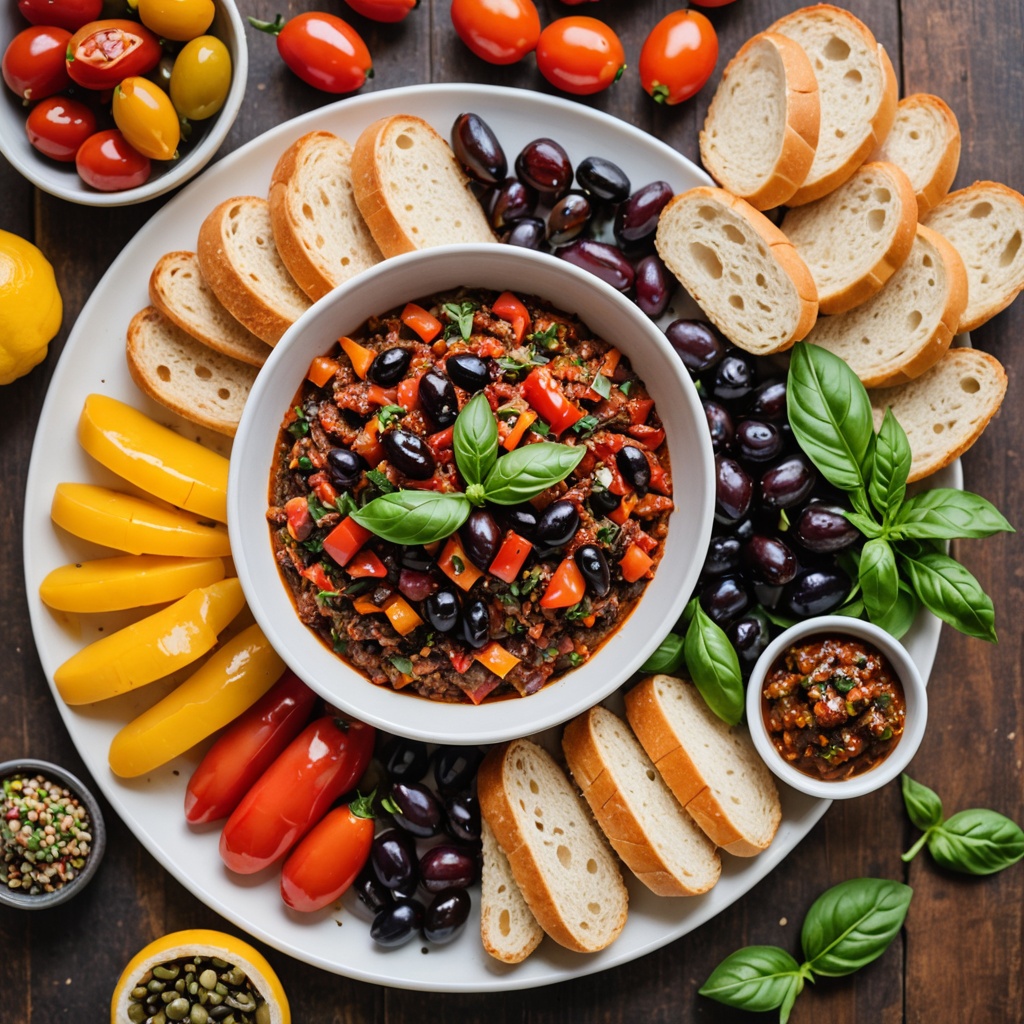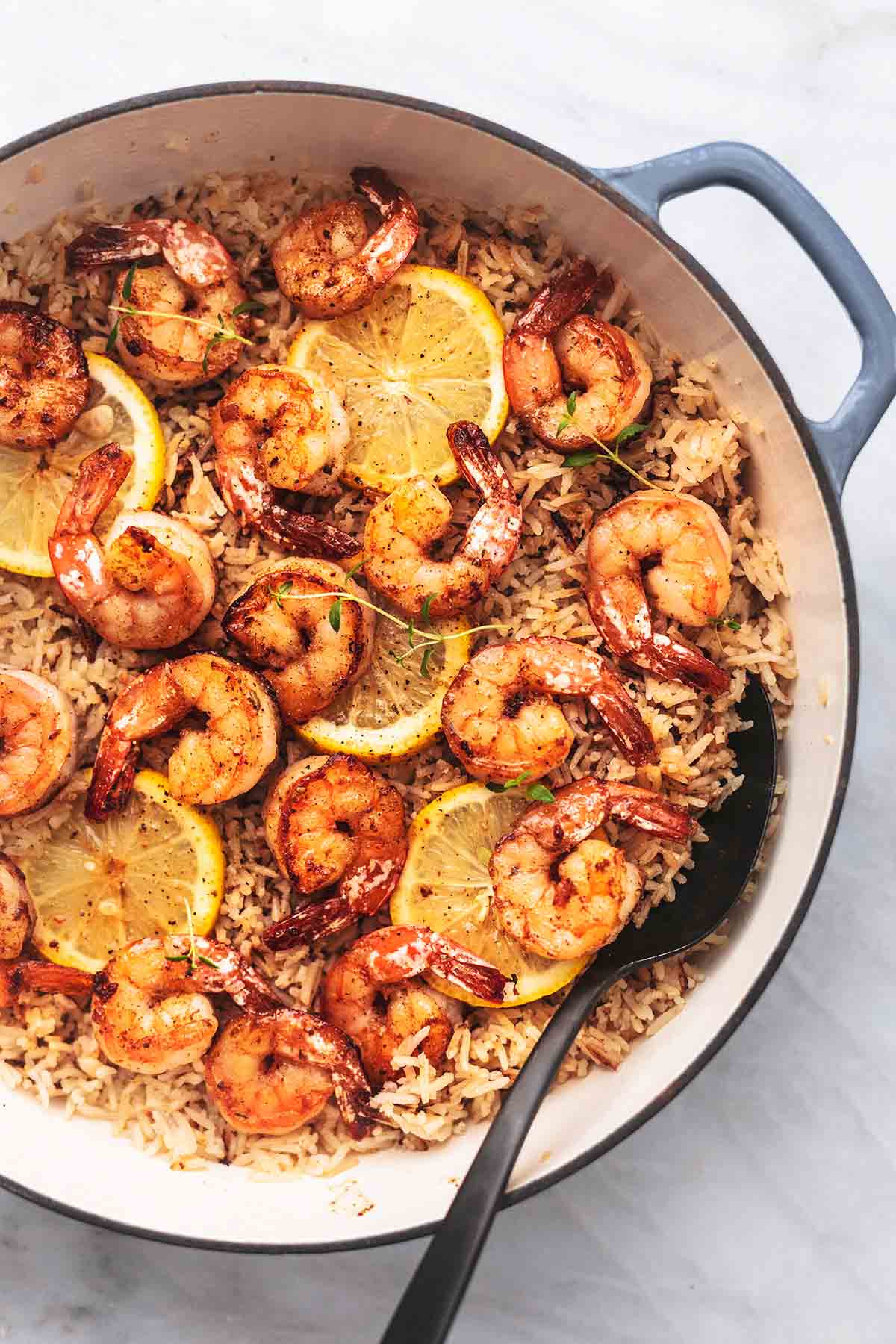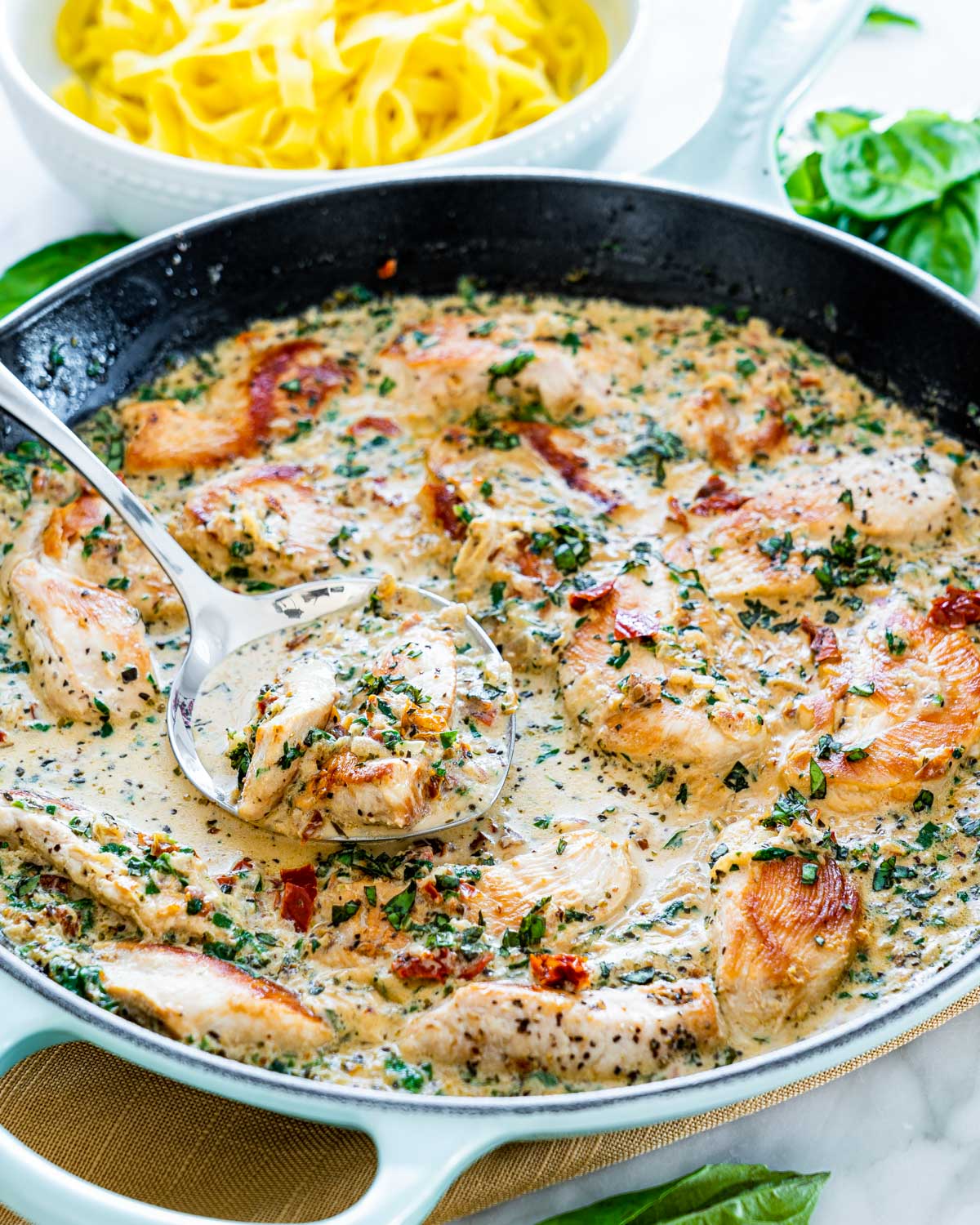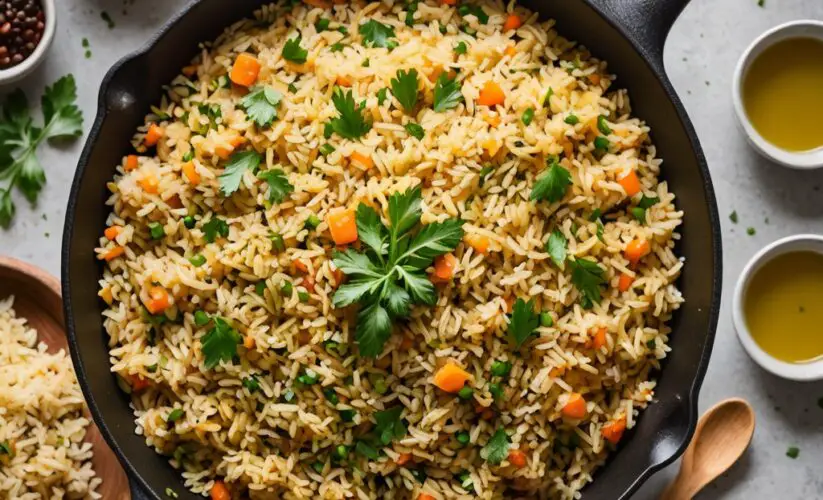
Easy One-Pan Rice Pilaf: Simple Recipe
Discover the Hidden Health Benefits of a Simple Rice Pilaf
Who knew that a humble side dish could pack such a nutritional punch? Today, we’re diving into the world of rice pilaf – not just any rice pilaf, but an easy, one-pan wonder that’s about to become your new favorite recipe.
This isn’t just about creating a delicious accompaniment to your main course. Our simple rice pilaf is a powerhouse of nutrients that can boost your skin health, strengthen your hair, and support your immune system. Yes, you read that right – all from a dish that takes less than 30 minutes to prepare!
In this post, we’ll walk you through the step-by-step process of creating this perfect rice pilaf. But more importantly, we’ll uncover the science behind how each ingredient contributes to your overall health and well-being. From the B-vitamins in the rice to the antioxidants in the olive oil, every component plays a crucial role.
So, whether you’re a busy professional looking for quick, nutritious meals, a health enthusiast seeking to optimize your diet, or simply someone who loves good food, this recipe is for you. Let’s embark on this culinary journey and discover how a simple rice dish can transform your health from the inside out!
Boiled Rice: A Simple Recipe with Surprising Health Benefits
While boiled rice may seem like a basic dish, it’s packed with nutrients that can benefit your skin, hair, and immune system. Let’s explore how this simple recipe contributes to your overall health:
Rice contains several nutrients that promote healthy skin:
- Selenium: This antioxidant helps protect skin cells from damage caused by free radicals. It may also reduce the risk of skin cancer and support overall skin elasticity.
- Niacin (Vitamin B3): Niacin aids in skin cell turnover and repair, potentially reducing the appearance of age spots and improving skin texture.
- Ferulic Acid: This antioxidant found in rice bran can help protect the skin from sun damage and may slow down the aging process.
The nutrients in rice can contribute to stronger, healthier hair:
- Protein: Rice provides a small amount of protein, which is essential for hair growth and strength. While not a complete protein source, it can contribute to your daily intake.
- Inositol: This carbohydrate, found in rice bran, has been shown to improve hair growth and reduce hair loss when applied topically.
- B Vitamins: Rice contains various B vitamins, including thiamine and niacin, which support healthy hair growth and may prevent hair loss.
Rice can play a role in supporting your immune system:
- Zinc: White rice is often enriched with zinc, a mineral crucial for immune function. Zinc helps activate T-lymphocytes, which are essential for fighting off infections.
- Selenium: In addition to its skin benefits, selenium supports the production of cytokines, proteins that help regulate immune responses.
- Complex Carbohydrates: The energy provided by rice’s complex carbohydrates helps fuel the body’s immune responses.
The benefits of rice for skin, hair, and immune health are largely due to its nutrient profile and the body’s ability to utilize these nutrients efficiently. For example, the antioxidants in rice (like selenium and ferulic acid) work by neutralizing harmful free radicals, which can damage cells and lead to premature aging and disease.
The B vitamins in rice play crucial roles in cellular metabolism, helping to convert food into energy that can be used by skin cells for repair and regeneration, and by hair follicles for growth. Meanwhile, the complex carbohydrates in rice provide a steady source of energy, which is essential for maintaining all bodily functions, including those of the immune system.
While rice alone isn’t a miracle food, incorporating it into a balanced diet can contribute to overall health and well-being. Remember, the key to maximizing these benefits is to consume rice as part of a varied diet rich in fruits, vegetables, lean proteins, and healthy fats.
So the next time you prepare this simple boiled rice recipe, know that you’re not just making a side dish – you’re contributing to your skin’s glow, your hair’s strength, and your body’s defense system!
Nutritional Powerhouse in a Grain
While rice may seem like a simple side dish, it packs a surprising nutritional punch. Let’s break down what’s really in your bowl of boiled rice. This nutritional profile is based on a serving of long-grain white rice, which typically makes up about a quarter of your plate. Understanding these numbers can help you make informed decisions about incorporating rice into your balanced diet. Here’s what you’re getting in each serving:
Macronutrients:
- Carbohydrates: 37g
- Protein: 3.5g
- Fat: 0.3g
- Fiber: 0.6g
Vitamins and Minerals:
- Thiamin (Vitamin B1): 0.1mg (8% Daily Value)
- Niacin (Vitamin B3): 1.6mg (10% DV)
- Vitamin B6: 0.1mg (6% DV)
- Folate: 91μg (23% DV)
- Iron: 0.8mg (4% DV)
- Magnesium: 19mg (5% DV)
- Phosphorus: 68mg (7% DV)
- Zinc: 0.8mg (5% DV)
- Manganese: 0.7mg (35% DV)
- Selenium: 9.8μg (14% DV)
Other nutrients:
- Sodium: 146mg (6% DV) (if using salt)
Potential Physiological Advantages:
- Energy source: The high carbohydrate content provides a quick and sustained energy release.
- Digestive health: The small amount of fiber contributes to digestive regularity.
- Nervous system support: B vitamins, particularly thiamin and niacin, play crucial roles in nervous system function.
- Blood formation: Iron and folate are essential for red blood cell production and oxygen transport.
- Bone health: Magnesium and phosphorus contribute to maintaining strong bones and teeth.
- Antioxidant properties: Selenium acts as an antioxidant, helping to protect cells from damage.
- Metabolic function: Manganese is involved in metabolism and bone formation.
- Muscle function: The small amount of protein contributes to muscle maintenance and repair.
One-Pan Rice Pilaf
Course: Lunch, DinnerCuisine: AsianDifficulty: Easy4
servings5
minutes25
minutes169
kcalIngredients
1 cup long-grain white rice
2 cups low-sodium chicken or vegetable broth
1 tablespoon olive oil
1/4 teaspoon salt (optional)
Directions
- Rinse the rice in a fine-mesh strainer under cold water until the water runs clear. This removes excess starch and helps prevent the rice from becoming sticky.
- Heat a medium-sized pan with a tight-fitting lid over medium heat. Add the olive oil and swirl to coat the bottom of the pan.
- Add the rinsed rice to the pan and stir to coat each grain with oil. Toast the rice for about 2-3 minutes, stirring frequently, until it becomes slightly fragrant and the edges of the grains become translucent.
- Carefully pour in the broth (it may splatter a bit) and add the salt if using. Stir gently to distribute the rice evenly.
- Bring the mixture to a boil, then immediately reduce the heat to the lowest setting. Cover the pan with the tight-fitting lid.
- Allow the rice to simmer undisturbed for 18-20 minutes. Do not lift the lid during this time, as it will release the steam necessary for cooking.
- After 18-20 minutes, remove the pan from the heat but keep it covered. Let it stand for an additional 5-10 minutes to allow the rice to absorb any remaining liquid and become fluffy.
- Finally, remove the lid and fluff the rice gently with a fork. Taste and adjust seasoning if needed.
- Serve immediately as a side dish or base for other recipes.
Note:
- This simple rice pilaf method results in fluffy, separate grains of rice with a subtle flavor from being toasted in oil. It’s a nutritious and versatile side dish that can complement various main courses.
Exploring Vegan Sauce Pairings for Absorption Method Rice
From quick weeknight dinners to impressive party dishes, our rice pilaf can adapt to any occasion. Its neutral yet flavorful profile makes it an ideal base for a wide range of cuisines and dietary preferences. Whether you’re looking to bulk up a salad, create a satisfying vegetarian main, or complement a protein-rich entrée, this pilaf has got you covered.
In this section, we’ll explore creative ways to transform your rice pilaf into various meals. We’ll share ideas for stuffed vegetables, vibrant grain bowls, comforting casseroles, and even next-day lunch options. Plus, we’ll offer tips on how to customize the pilaf to suit different taste preferences and nutritional needs.
Here are some ideas:
- Vegan Lemon-Herb Sauce: Made with lemon juice, olive oil, fresh herbs (like parsley, dill, or basil), and garlic.
- Tahini Sauce: A Middle Eastern sauce made from tahini (sesame paste), lemon juice, garlic, and water.
- Vegan Pesto: Made with basil, garlic, pine nuts or walnuts, nutritional yeast (instead of cheese), and olive oil.
- Romesco Sauce: A Spanish sauce made with roasted red peppers, tomatoes, almonds, garlic, and olive oil.
- Coconut Curry Sauce: Made with coconut milk, curry powder, and various spices.
- Vegan Mushroom Gravy: Made with mushrooms, vegetable broth, herbs, and thickened with cornstarch or flour.
- Chimichurri: An Argentinian sauce made with parsley, garlic, vinegar, and olive oil.
- Tomato-Based Sauce: A simple sauce made with crushed tomatoes, garlic, and herbs.
- Vegan Yogurt Sauce: Made with plant-based yogurt (like coconut or soy yogurt), lemon juice, and herbs.
- Avocado Sauce: A creamy sauce made with ripe avocados, lime juice, cilantro, and garlic.
- Vegan Béchamel: A creamy white sauce made with plant-based milk, flour, and nutritional yeast.
These vegan sauces can add variety, flavor, and additional nutrients to your rice pilaf. They’re versatile enough to complement the dish while maintaining its plant-based integrity. Remember, you can adjust the consistency of these sauces by adding more liquid (water or plant-based milk ) if needed.

